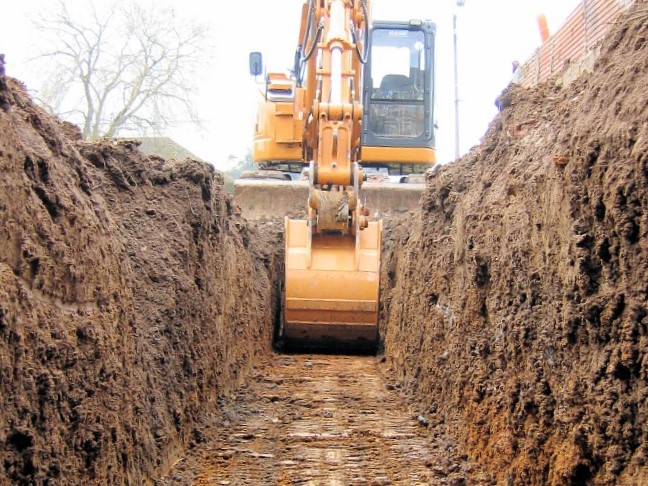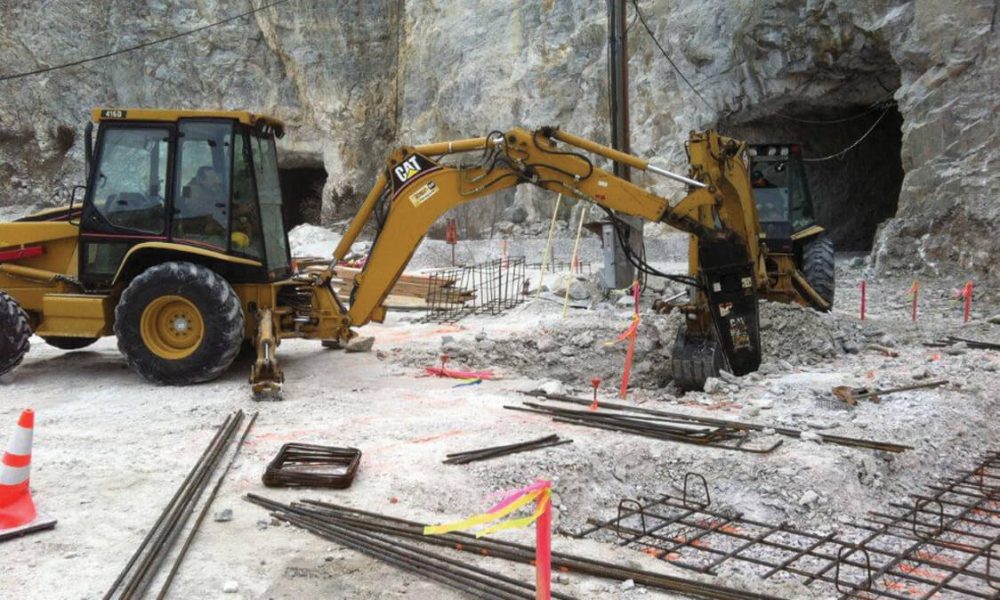Introducing the Art of Excavation: Pro Tips for Safe and Effective Digging
In the world of excavation, the proficiency of efficient and risk-free excavating is an art form that needs adherence, accuracy, and understanding to well established practices. As soil is turned and earth is relocated, the ins and outs of excavation expose themselves, demanding an eager understanding of devices, dirt structure, safety procedures, and environmental factors to consider. The knowledge required to browse these components successfully can suggest the distinction between a successful excavation project and a prospective calamity. By untangling the layers of this complex process, a world of techniques and understandings waits for those looking for to elevate their excavation skills to brand-new elevations.
Importance of Appropriate Equipment
To make sure the security and efficiency of any type of excavation task, making use of the appropriate tools is critical. The right devices not just boost productivity however additionally minimize dangers related to excavating. Excavation jobs differ in scope and intricacy, ranging from tiny household landscaping tasks to large-scale building endeavors. No matter the job size, having the proper devices can make a substantial difference in the outcome.
These functional devices come in various sizes to match different task demands. Mini excavators are optimal for smaller jobs, while larger excavators tackle a lot more comprehensive projects successfully.
Excavators stand out in jobs that call for pressing big amounts of soil or debris. By investing in the ideal tools, excavation projects can be finished securely, on time, and with accuracy.
Recognizing Dirt Structure
An extensive understanding of dirt structure is fundamental for performing excavation jobs with accuracy and safety. Recognizing the various kinds of soil is crucial as it straight affects excavation approaches, equipment selection, and general job effectiveness.
Silt fragments are smaller sized than sand however larger than clay, providing modest drain and communication. Organic issue, such as decomposing plant material, impacts soil fertility and stability.
Before starting excavation, performing soil examinations to determine its structure and attributes is crucial. This info assists in selecting the suitable devices, executing precaution, and establishing excavation techniques tailored to the specific soil problems - dump truck companies in ohio. By recognizing dirt make-up, excavation experts can improve task end results while guaranteeing security and adherence to finest practices
Security Measures and Methods
Comprehending soil structure is the cornerstone upon which safety and security procedures and protocols for excavation projects are developed, making sure the well-being of employees and the success of the endeavor. There are numerous key procedures that should be carried out to reduce threats and stop accidents. when it comes to safety and security throughout excavation.
Most importantly, prior to any kind of digging starts, a comprehensive evaluation of the site need to be conducted to recognize any possible threats such as below ground utilities, unpredictable dirt problems, or neighboring structures that could pose a danger. It is important to have an experienced individual look after the excavation procedure to make certain that all safety and security methods are followed purely.
Moreover, all employees associated with the excavation must be correctly educated in secure excavating practices and the appropriate operation of devices. Individual safety equipment (PPE) such as hard hats, high exposure garments, handwear covers, and safety and security boots should be worn whatsoever times to reduce the danger of injuries. lancaster excavation. Regular safety meetings and toolbox talks should also be carried out to keep all workers informed about check my reference potential risks and strengthen risk-free work methods. By adhering to these security procedures and procedures, excavation jobs can be finished effectively and without event.
Effective Excavation Preparation
When beginning on an excavation job, thorough planning is vital to make certain efficiency, safety, and effective results. Reliable excavation preparation entails a number of crucial steps that are essential for the smooth execution of the task.
Once the website analysis is complete, the next action is to create a clear timeline and routine for the excavation activities. This consists of identifying the series of jobs, equipment demands, and workforce allocation. Appropriate organizing aids avoid delays and makes certain that the project remains on track.

Additionally, interaction amongst all group participants is extremely important during the planning phase. Clear directives, routine updates, and efficient sychronisation are crucial for an effective excavation task. By spending effort and time in precise planning, excavation teams can substantially improve performance, decrease risks, and accomplish effective end results.

Handling Environmental Factors To Consider
With boosting emphasis on ecological sustainability in building practices, taking care of environmental factors to consider has become an essential element of excavation projects. Excavation tasks have the potential to influence the surrounding atmosphere via dirt erosion, debris overflow, habitat disturbance, and contamination of water resources. To reduce these risks, it is essential to execute finest methods that focus on environmental management.

Moreover, proper waste monitoring is crucial to prevent soil and water contamination. Applying treatments for the disposal of unsafe products, recycling of waste products, and decreasing making use of unsafe chemicals can considerably decrease the environmental impact of excavation projects. By integrating these practices into excavation preparation and implementation, building and construction companies can ensure that their tasks are not just secure and effective however likewise ecologically responsible.
Verdict
In conclusion, mastering the art of excavation requires an extensive from this source understanding of appropriate equipment, dirt make-up, precaution, and effective preparation. By complying with these guidelines and considering ecological variables, excavations can be carried out safely and successfully. It is important to prioritize safety and security and productivity in every digging task to guarantee effective results.
As dirt is turned and planet is moved, the intricacies of excavation expose themselves, demanding a keen understanding of tools, soil make-up, security procedures, and ecological considerations.To make certain the safety and performance of any type of excavation task, using the proper tools is critical.A comprehensive understanding of dirt make-up is essential for carrying out excavation jobs with accuracy and safety. Comprehending the various kinds of dirt is critical as it straight influences excavation techniques, equipment choice, and overall task performance. By understanding soil make-up, excavation professionals can boost project results while making certain safety and adherence to finest methods.